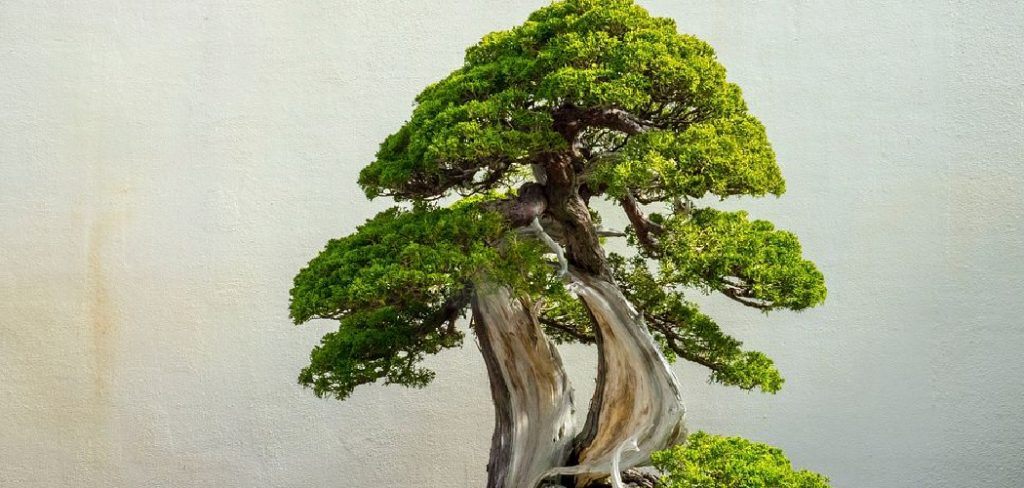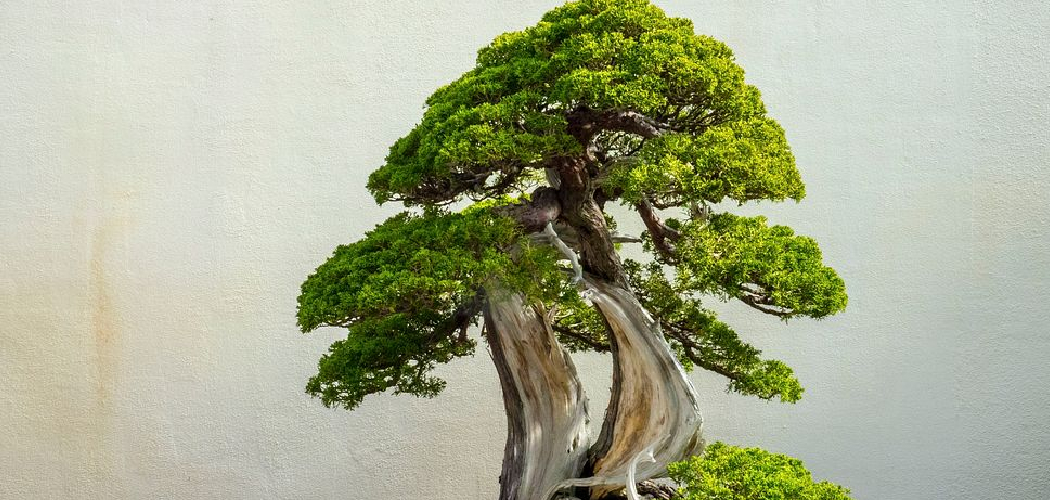To tell if your bonsai is dying, look for signs such as wilting leaves, yellowing or browning foliage, and a decline in overall health and vigor. Proper care, including proper watering, sunlight exposure, and regular pruning, can help prevent these issues and keep your bonsai healthy.

Recognizing The Symptoms
Bonsai trees require special care to stay healthy and vibrant. It’s important to be able to identify signs of distress to prevent further damage and save your beloved bonsai. Here are some key symptoms to watch out for:
- Leaf Discoloration: If you notice your bonsai’s leaves turning yellow, brown, or black, it could be a sign of nutrient deficiencies, overwatering, or pest infestation.
- Wilting and Drooping: When bonsai trees lack sufficient water or are exposed to extreme temperatures, their leaves can wilt or droop. This symptom indicates a need for immediate action to prevent dehydration or frost damage.
- Excessive Leaf Shedding: Some leaf shedding is normal, but an unusually high amount could indicate stress or health issues. Investigate possible causes such as inadequate light or improper watering.
- Stunted or Distorted Growth: If your bonsai’s growth appears stunted or its branches and leaves are misshapen, it may suffer from root rot, nutrient imbalances, or improper pruning. These issues should be addressed promptly to ensure your bonsai’s well-being.
Common Causes Of Bonsai Decline
Bonsai decline can be caused by various factors, including incorrect watering, lack of sunlight, pests, and diseases. To determine if your bonsai is dying, look out for wilted leaves, dried branches, yellowing foliage, and a lack of new growth. Proper care and prompt intervention can help revive a declining bonsai and ensure its vitality.
Overwatering
Overwatering is one of the most common causes of bonsai decline. When the soil is consistently damp or waterlogged, it can lead to root rot, suffocating the roots and preventing the tree from absorbing nutrients properly. Signs of overwatering include yellowing leaves, weak growth, and a foul odor coming from the soil.
Underwatering
On the other hand, underwatering can also harm your bonsai. When the soil becomes too dry, it deprives the roots of much-needed moisture, causing the leaves to wilt and brown. To prevent underwatering, ensure that the soil is kept moist but not soggy. Regularly check the moisture level of the soil by inserting a finger about an inch deep – if it feels dry, it’s time to water the tree.
Lack Of Sunlight
Sunlight is crucial for the health of your bonsai. Without enough sunlight, the tree may not be able to carry out photosynthesis effectively, resulting in weak growth and pale leaves. Place your bonsai in a well-lit area, preferably near a window where it can receive several hours of direct or indirect sunlight each day.
Improper Temperature
Bonsai trees have specific temperature requirements depending on their species. Temperature extremes can cause stress to the tree, leading to a decline in health. Some bonsai prefer cooler temperatures, while others thrive in warmer climates. Research the specific temperature range that is optimal for your bonsai and ensure it is placed in an appropriate location.
Nutrient Deficiency
Just like any other plant, bonsai trees require adequate nutrients to thrive. A lack of essential nutrients can weaken the tree, making it more susceptible to diseases and pests. Use a balanced bonsai fertilizer regularly to ensure your tree is receiving the nutrients it needs to stay healthy. Additionally, consider repotting your bonsai every few years to provide fresh soil with sufficient nutrients.
How to Tell If Your Bonsai is Dying : Step by Step Guide
Examining The Soil And Root Health
Examining the soil and root health is essential to determine if your bonsai is dying. Start by checking for soggy or dry soil. Overwatering or inadequate drainage can lead to root rot and fungal growth, which are detrimental to the health of your bonsai. If the soil feels wet and looks excessively damp, it may indicate overwatering. On the other hand, if the soil feels dry and crumbly, it could mean that your bonsai is not receiving enough water. In either case, adjusting the watering routine is crucial.
Furthermore, root bound condition, where the roots have outgrown the container, can also contribute to the decline of your bonsai. Look for tightly wound roots or excessive root growth on the surface of the soil. If you suspect root bound, it’s advisable to repot your bonsai and trim back the roots.
Bark Condition
If you notice cracking and splitting in the bark of your bonsai, it could be a sign that it is in distress. This can indicate issues such as dehydration, extreme temperature changes, or insufficient moisture in the soil. Peeling bark is another indication that your bonsai may be dying. It could be due to natural shedding or more serious underlying problems, such as fungal or bacterial infections.
Blackened or discolored bark is also a cause for concern. It might suggest that your bonsai is suffering from diseases or pests. It’s important to carefully observe the condition of the bark as it is an essential part of the bonsai’s overall health and vitality.
Twig And Branch Inspection
Inspecting the twigs and branches of your bonsai tree is a crucial step in determining if it is starting to deteriorate. One sign of trouble is brittle and dry twigs. These indicate that the tree is not receiving enough moisture, which can be caused by underwatering or improper watering techniques.
Another concerning issue is the presence of hollow or decaying branches. These can be a result of disease, pest infestation, or improper pruning. Withered branches are another red flag, as this suggests a lack of vitality and could be due to nutrient deficiencies or improper light exposure. Lastly, if you notice sparse foliage on your bonsai, it may be an indication of a dying tree. This could be caused by over-pruning, inadequate nutrition, or environmental stress. Regularly checking and addressing these issues can help you identify if your bonsai is dying and take the necessary steps to revive it.
Testing The Tree’s Resilience
A healthy bonsai tree is a source of pride for any enthusiast. However, it’s essential to be able to recognize the signs of ailing health to take timely action. One way to test a bonsai tree’s resilience is by performing the bend and snap test. Gently bend a branch to see if it snaps easily, which may indicate weakness and brittleness. A healthy branch should have some flexibility. Another method is to conduct a scratch test. Scrape off a small section of the bark with your thumbnail to examine the color underneath. If the exposed area is green, it signifies vitality, but if it’s brown or black, it may indicate decay or dying tissue.
Evaluating The Tree’s Vigor
Lack of new growth: A key indicator of a dying bonsai is the lack of new growth. Bonsai trees, like any other living plant, need to continuously grow and produce new leaves and branches. If you notice that your bonsai has not shown any signs of new growth for an extended period, it may be a cause for concern.
Reduced or no flowering: Another sign of a dying bonsai is reduced or no flowering. Depending on the species of bonsai tree, it should produce flowers during certain times of the year. If your bonsai fails to bloom or produces significantly fewer flowers than usual, it could indicate that the tree is not in a healthy state.
Deformed leaves or flowers: Pay attention to the appearance of the leaves and flowers on your bonsai. If they are deformed or show signs of discoloration, it could be a sign of a health issue. Deformed leaves or flowers may indicate nutrient deficiencies, pests, or diseases affecting the tree.
Seeking Professional Help
If your bonsai is showing signs of decline, seeking professional help can provide valuable insights into its health. Qualified experts can accurately diagnose and address the specific issues that could be causing your bonsai to wither or die. Trusting a professional can give your plant the best chance for survival.
| Consulting a bonsai specialist | Professional treatments and care tips |
|---|---|
| If you notice that your bonsai is in poor health and you are unable to identify the issue, it is recommended to consult a bonsai specialist. These experts have the knowledge and experience to diagnose problems and provide appropriate remedies. They will examine your bonsai thoroughly and recommend the necessary treatments. | Professional treatments for a dying bonsai may vary depending on the underlying issue. This can include changes in watering techniques, adjusting light exposure, addressing pests or diseases, and pruning to remove diseased or dead branches. They may also suggest repotting your bonsai to improve its overall health and root system. |
| Regular maintenance and care are essential for the well-being of your bonsai. A bonsai specialist can guide you on proper watering schedules, fertilization methods, and positioning to optimize growth. They may also provide guidance on bonsai-specific care techniques, such as wiring, shaping, and repotting. | It’s crucial to follow the advice and instructions provided by the bonsai specialist. By addressing the concerns and implementing their recommendations, you stand a greater chance of restoring your bonsai’s health and prolonging its lifespan. |
Remember that early detection and intervention are key when it comes to saving a dying bonsai. By seeking professional help and diligently following their guidance, you can increase the chances of rescuing your beloved bonsai from its declining state.
Frequently Asked Questions On How To Tell If Your Bonsai Is Dying
How Do You Know When A Bonsai Tree Is Dying?
A bonsai tree is dying when its leaves turn yellow or brown, fall off excessively, or when the branches become brittle or break easily. Lack of water, improper lighting, pests, or disease are common causes for a bonsai to deteriorate.
Regularly monitor the tree’s appearance and health to catch any signs of decline early.
What Does An Unhealthy Bonsai Look Like?
An unhealthy bonsai may have yellow or dropping leaves, dry or brittle soil, or signs of pests.
How Do You Save A Dying Bonsai Tree?
To save a dying bonsai tree: 1. Assess the root system and remove any rotten or damaged roots. 2. Provide suitable growing conditions, such as adequate sunlight, temperature, and humidity. 3. Water the tree properly, avoiding over or under-watering. 4.
Prune dead or unhealthy branches to promote new growth. 5. Use balanced fertilizer to nourish the tree and help it recover.
What Does An Overwatered Bonsai Tree Look Like?
An overwatered bonsai tree may show signs of yellowing leaves, wilting or drooping foliage, and damp or soggy soil.
Conclusion
To avoid the loss of your precious bonsai, it’s crucial to be able to identify signs of its deterioration. By closely monitoring its leaves, branches, and overall health, you can save your bonsai from further decline. Remember to provide proper care, such as watering, pruning, and protecting from extreme temperatures.
With a little attention and knowledge, you can ensure a thriving and beautiful bonsai for years to come. Keep these tips in mind and watch your bonsai flourish!

